On April 8, 1946, the two-place Bell 47B secured approval from the Civil Aeronautics Authority (CAA), becoming the world’s first type certified commercial helicopter (type certificate “H-1”).
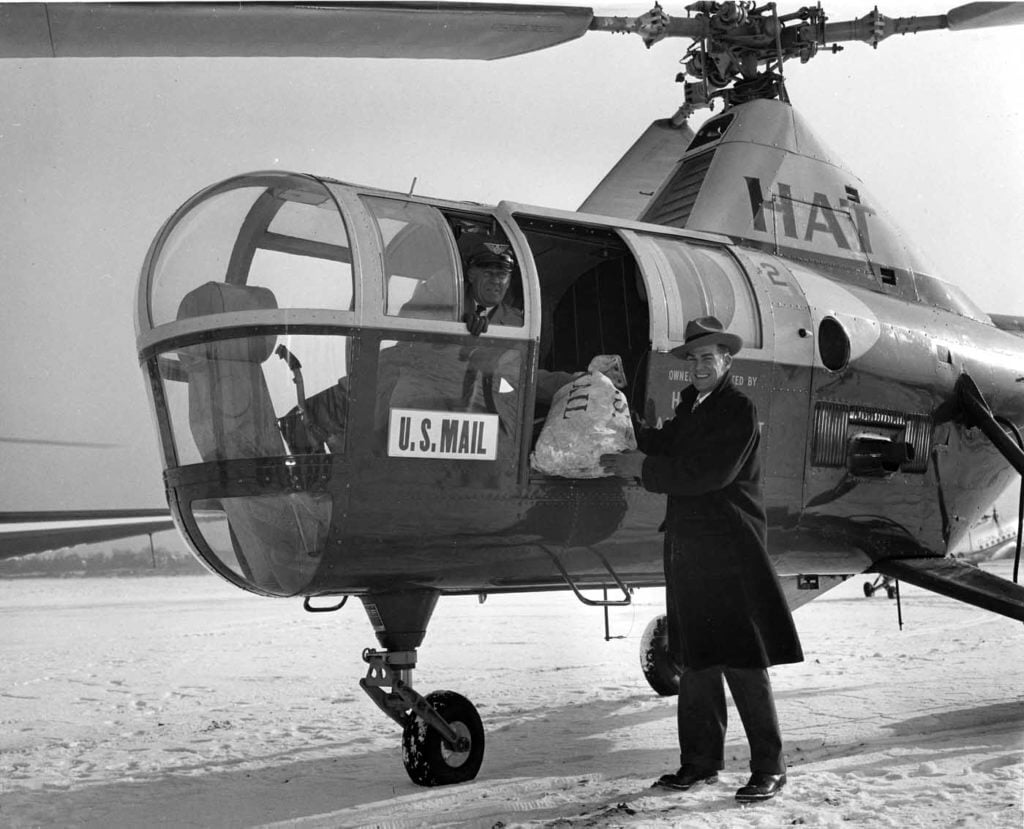
Bell Aircraft Corporation, of Niagara Falls, New York, was just one of a number of pioneering companies rushing to get a foothold in this newly-established branch of the aviation industry, all eager to secure the delivery of the very first commercial rotary-wing aircraft.
Sikorsky Aircraft, of Stratford, Connecticut, was not far behind Bell, with its four-place S-51 type certified (H-2) on April 17, 1947 (it had received its airworthiness certificate the previous March, just a few weeks after the Bell 47B). Both companies anticipated immense civilian sales of their new rotorcraft, but for this to materialize, the nascent commercial sector needed the first operators to form.
British airline pioneer Norman Edgar, owner of Western Airways in Bristol, U.K., had seen Sikorsky R-4 helicopters flying in England during the latter stages of the Second World War while he was in the Army. During the war, Edgar had travelled to the U.S. as the British Transport Auxiliary Service contact to recruit American female civilian pilots, with the aim being that they would ferry military aircraft back to England.
Edgar quickly saw a new industry for the helicopter after the war was over, and in 1945 he helped form Helicopter Air Transport (HAT) in Philadelphia, Pennsylvania. The company was to commercially operate helicopters — when they became available for civilian use. The president of HAT was Jonathan Wilford, with Edgar becoming the executive vice-president.
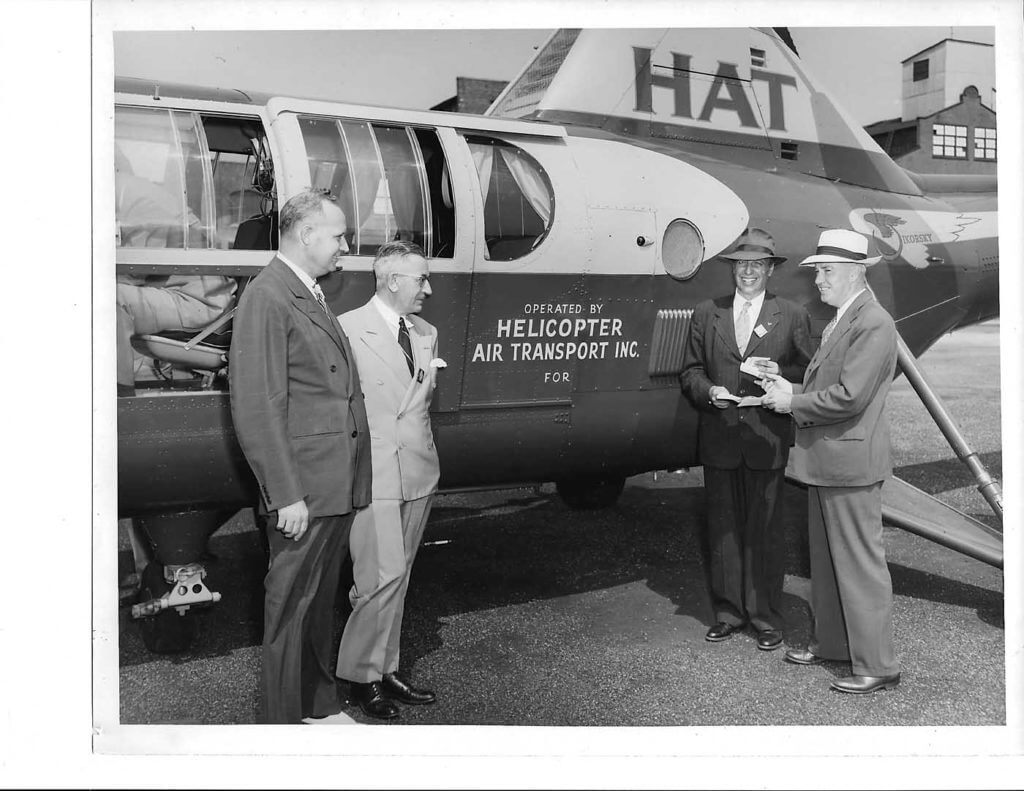
Funding for this first helicopter operator in the U.S. came from several Philadelphia businessmen with no background in aviation. They were, however, very astute, and they hired the best ex-military United States Army Air Forces helicopter pilots for HAT. Peter Wright, a former Second World War pilot with the “Flying Tigers” in China, was hired as the sales manager.
The new chief pilot was Major Frank T. Cashman, a former Army Air Force chief instructor pilot on helicopters at Wright Field in Dayton, Ohio. Other early former military pilot hires included Lou Leavitt (previously a helicopter test pilot for the Platt-LePage XR-1 rotorcraft), Henry Eagle Jr., Jack Connelly, Roy Beer and Frederick Feinberg.
On July 29, 1946, Sikorsky Aircraft became the first to deliver a helicopter — the S-51 — for commercial use. The aircraft had its airworthiness certificate, and would be operated on a temporary type certificate until the official one was awarded the following year. Sikorsky general manager B.L. Whelan presented the new aircraft to HAT president Wilford in Bridgeport, Connecticut. HAT had two more S-51s on order for general and charter use, at a cost of $48,500 per aircraft. As it turned out, HAT received the S-51s at a bargain price, as the type later sold at $70,000.
HAT established its new base for helicopter operations at the Camden Airport in New Jersey, across the Delaware River from Philadelphia.
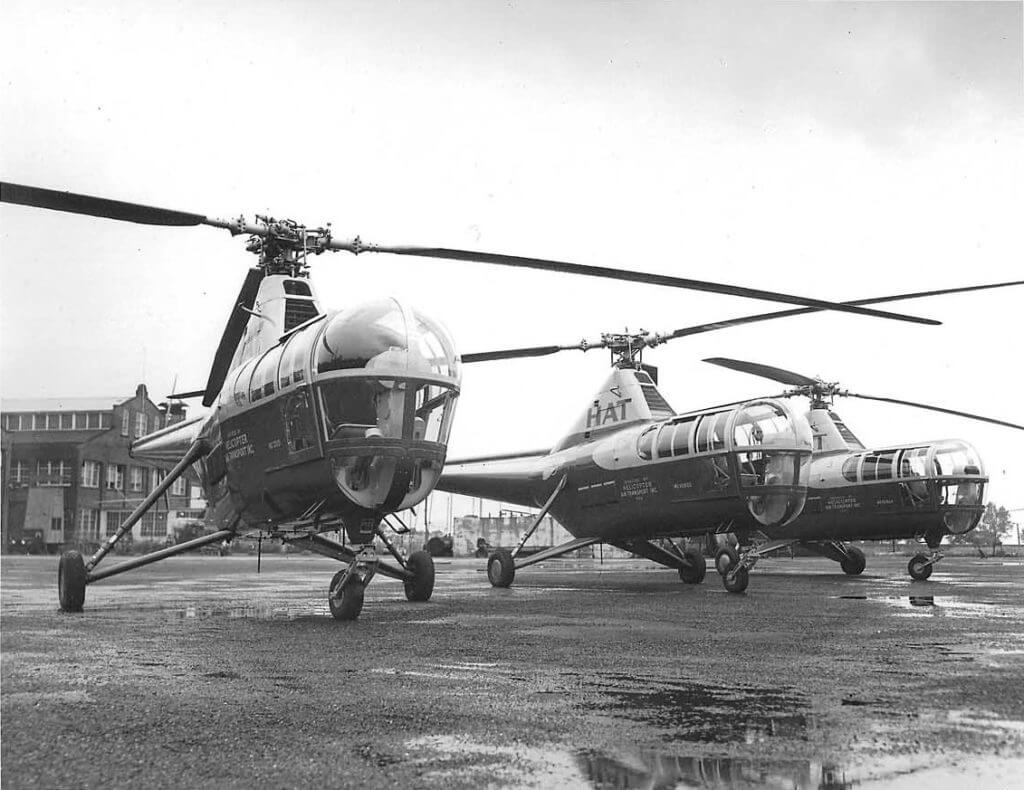
Bell Aircraft delivered the first of three Bell 47Bs to HAT on Dec. 31, 1946. Each one cost $25,000, taking HAT’s investment in its first six helicopters to over $220,000. However, its ambition reached even further, and it purchased a surplus experimental prototype Platt-LePage XR-1A with plans to use it for crop dusting and utility work.
The first commercial delivery
On Aug. 30, 1946, the last of the three S-51s was delivered to HAT. The following week, all three landed in a park next to the Franklin Institute in Philadelphia, watched by over 200 guests. Among the passengers was Igor Sikorsky, who brought greetings to Bernard Samuel, the mayor of Philadelphia, from the mayor of Bridgeport. HAT planned to use the three S-51s to transport passengers, freight, and mail to nearby airports.
“For numerous months, Helicopter Air Transport was finding its own answers to questions concerning the future of the commercial helicopter,” stated a Helicopter Air Transport early brochure. “They carried out survey flights, transporting passengers and executive charters, plus flying the U.S. mail. These very successful operations resulted in international recognition of HAT as a leader in the field of helicopter transportation.”
In order to publicize and educate the public about the versatile new form of transport, HAT began a series of demonstrations to show off its rotary-wing aircraft. Wilford realized that much of this publicity would be carried out either at cost or free. While Edgar was firm in his belief that the helicopter was there to stay and that the company was building for the future, it was not long before HAT could see that there was a very high cost to operating them and a lot of maintenance to keep them flying.

New helicopters were very expensive to purchase and were capable of only carrying two to four passengers at the time. The cost to rent a Bell 47B was about $75/hour and around $125/hour for the larger S-51. This was a considerable amount of money in 1946. The passenger rate per mile (one way) was estimated to be about 35 cents.
During the fall of 1946, all three S-51s were put to work. They moved commuters and executives, inspected powerlines and pipelines, carried out water surveys, helped police departments, performed experimental forest fire patrols, and completed some limited crop dusting and spraying of crops and pesticides. They also offered simple helicopter rides, flew publicity flights at baseball and football games, served as aerial taxis from Philadelphia to the Atlantic City racetrack, transported politicians on campaigns, performed aerial photography, and even transported Santa Claus over the holidays. HAT tried any practical use for their helicopters they could think of. The work took them around New York, Washington, Pennsylvania, Connecticut and New Jersey.
Among the S-51 demonstration flights was an air rescue near a beach in Ocean City, New Jersey. The S-51 carried a lifeguard from the beach and dropped him by a swimmer needing rescue. A line was lowered to the lifeguard and swimmer from the hovering S-51, which was grasped by the two men in the ocean. To complete the rescue, they were towed through the water to the beach.
The Bell 47B enters operation
HAT’s fleet grew further in January 1947, when it received its final two Bell 47Bs. It leased more Bell 47s from Bell due to an increased work load, and Leavitt ferried the XR-1A to HAT later in the spring.
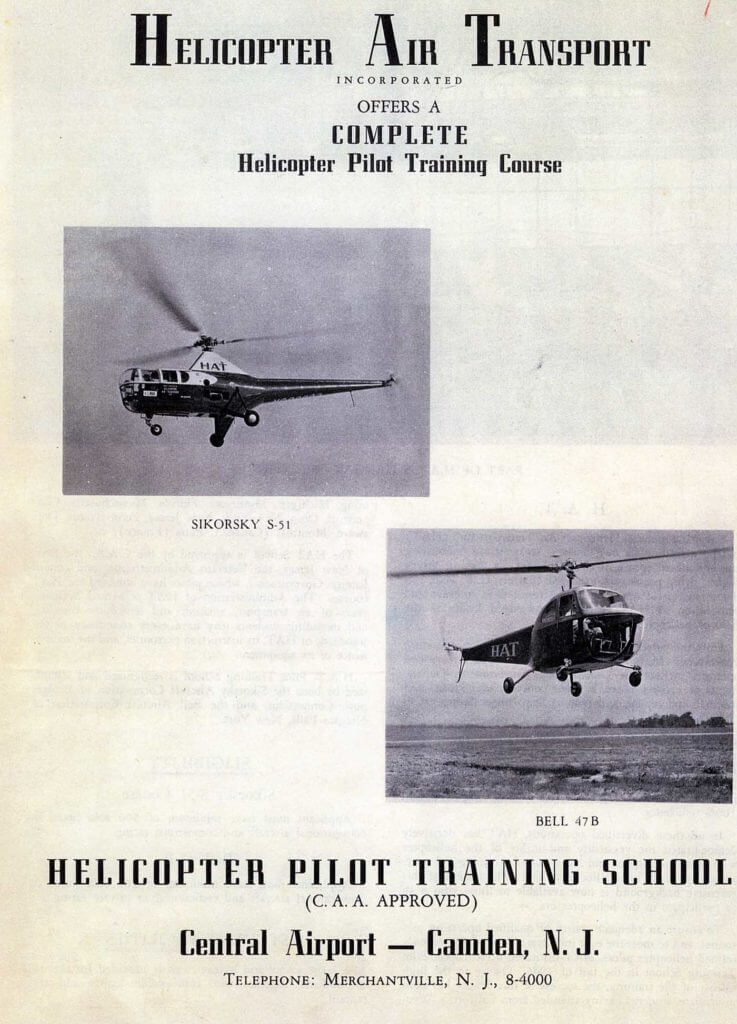
During the winter of 1946/47, HAT made a noteworthy move by delivering department store packages in Boston, Massachusetts, and Hartford, Connecticut. It also performed rescue operations during a blizzard in the Adirondack Mountains, and flew air mail tests in New York City, Boston, and Philadelphia — becoming the first commercial operator to carry the U.S. Mail by helicopter. It even flew lighthouse keepers to their lighthouses, performed at numerous air shows, and flew photographers with motion picture cameras to document horseraces in the summer and bobsled races in the winter months. It also became the first company of any kind to receive a non-scheduled air carrier certificate.
Through all this work, HAT demonstrated the versatility and utility of the helicopter, and their operating experience was unequalled.
One of the teething issues for the early helicopter industry was a lack of trained commercial pilots — in terms of training, both Bell and Sikorsky had their own in-service flight training schools, but they were for owners of new helicopters. In the fall of 1946, HAT decided to start a flight training and mechanics school for new helicopter pilots, led by the experienced military instructor Cashman.
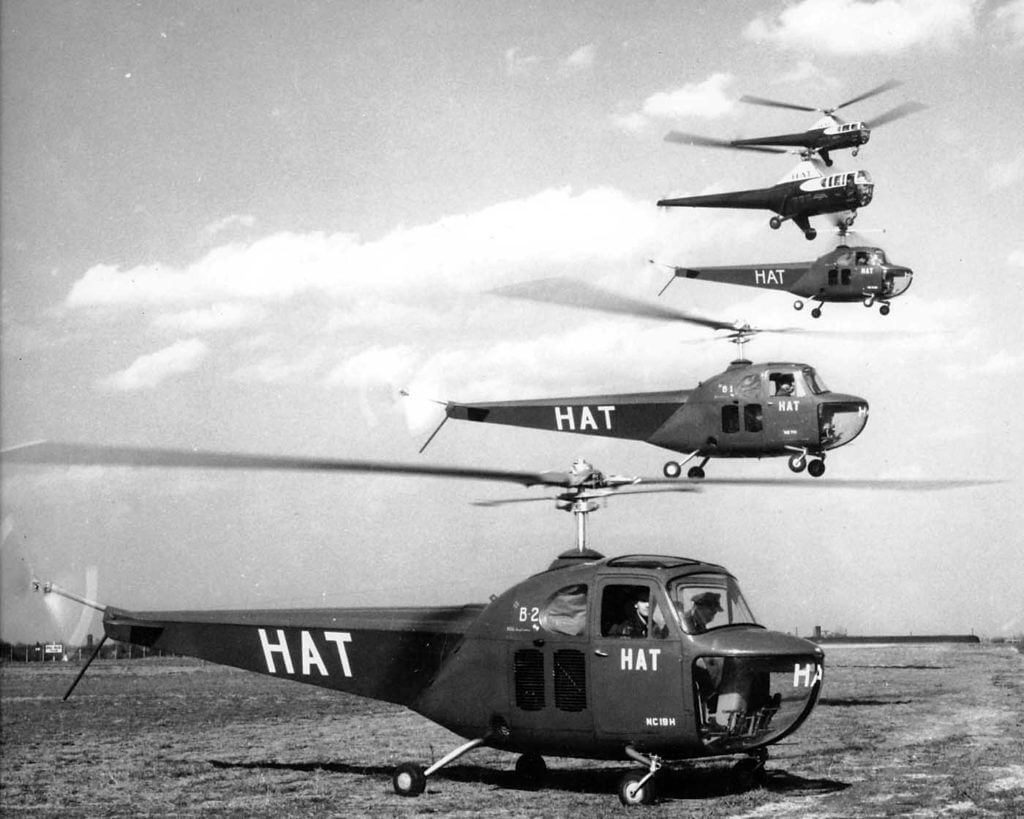
The HAT pilot training school was recognized and authorized by both Bell and Sikorsky, and it was also approved by the CAA. Applicants required a minimum of 500 hours in fixed-wing aircraft and a commercial rating for the Sikorsky S-51 course, and 200 hours in fixed-wing aircraft and a commercial or private rating for the Bell 47B course.
The S-51 course cost $2,000 for 20 hours, and the Bell 47B course cost $1,500 for 25 hours. A complete transition course, with 20 hours on the S-51 and five hours on the Bell 47B cost $2,300. A typical class size was 25 students, and before long, there was interest from all over the U.S. and Canada. The French Air Ministry even sent several students to Camden for pilot training at the school.
During 1947, HAT looked at purchasing even more helicopters. These included the agricultural dusting and spraying Bell 47B-3s, and it watched with interest as Frank Piasecki undertook his pioneering work with much larger tandem-rotor helicopters that could carry many more passengers.
It also continued to look for new ways to use its helicopters. Sales manager Peter Wright thought about the oil industry exploration in the Gulf of Mexico off Louisiana, and the problems companies were having traversing grassy wet marshes and swamps with marsh buggies. He convinced Robert H. Ray — a geophysical exploration company from Houston, Texas — to try using a helicopter, pointing out that it would have little impact on the environment.
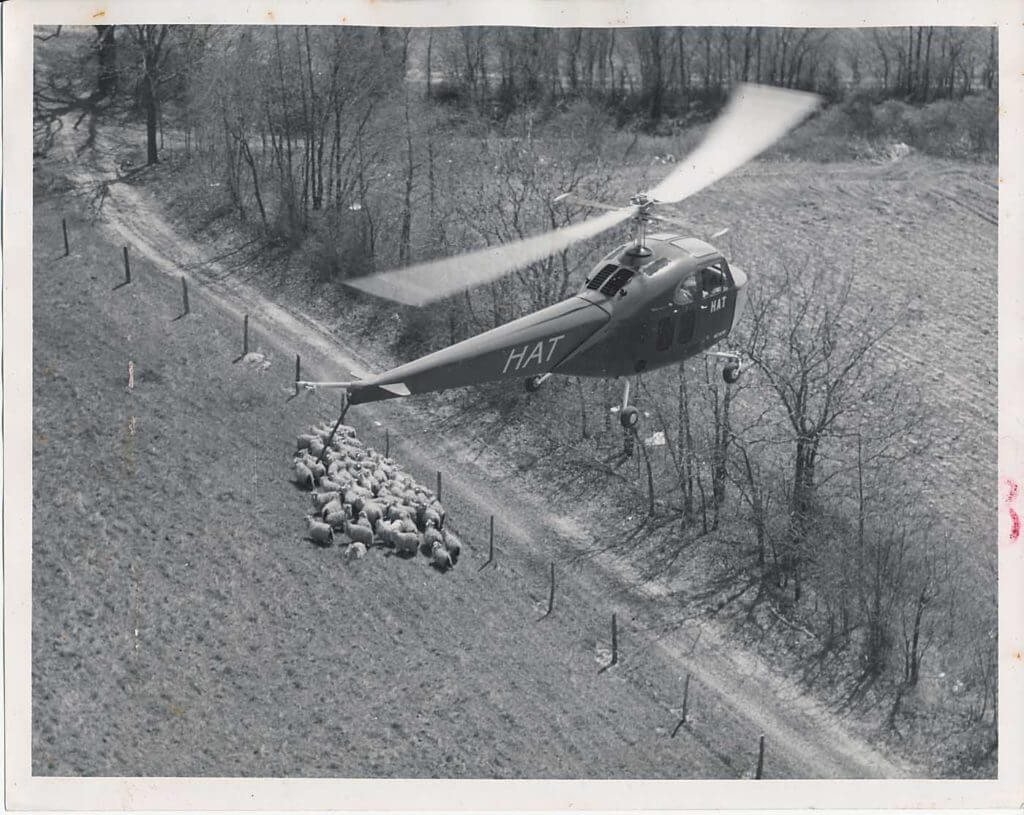
Wright planned to use one of HAT’s Bell 47Bs on floats to move crews around, as well as carry the gravity meter instrument and its battery. Bell followed the operation in the Gulf with interest.
The HAT Bell 47B assisted on an oil exploration project for Standard Oil from May 11 to by Aug. 12, 1947. They discovered that using the helicopter was a third of the cost of performing the same work with a marsh buggy, as it could accomplish in one hour what would take an entire day with the land vehicle.
The operation — the first use of a helicopter for oil exploration in the U.S. — turned out to be a great success. And the legacy of this work continues to this day, with helicopters playing a crucial role in oil exploration around the world.
A sudden ending
In the summer of 1947, having flown over 2,000 hours with no accidents, everything looked great for the first commercial helicopter company. But things were about to change.
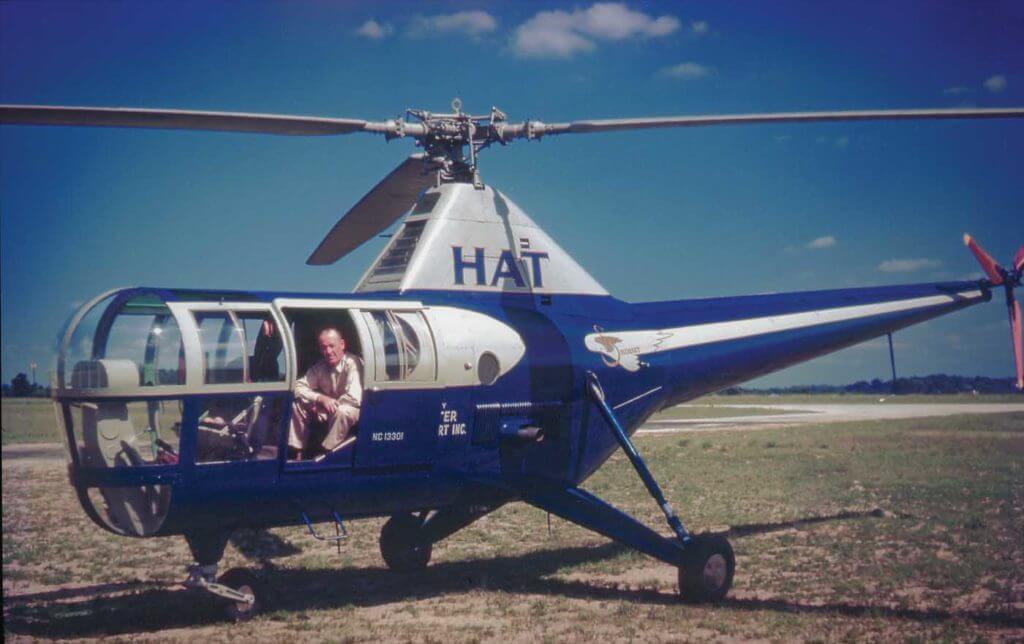
That September, an S-51 was destroyed in a training accident. Around the same time, HAT’s financial problems began to be a serious issue. There was simply not enough cash coming in to cover the costs of running a helicopter company. As a result, on Oct. 21, it filed for bankruptcy. HAT’s books showed assets of $234,875 with liabilities of $178,831. It was given 30 days to reorganize, but unfortunately it was forced to shut down.
Sikorsky repossessed HAT’s two S-51s, and later sold them to the U.S. Coast Guard and to the French government. The three Bell 47Bs were taken back by Bell, and sold to Rick Helicopters and New England Helicopter Service.
HAT’s assets were sold in a public auction at the Central Airport in Camden on April 2, 1948. The XR-1A was sold to Frank Piasecki, and was flown to the Piasecki facilities by Leavitt.
Helicopter Air Transport may not have lasted long, but it played a large role in establishing commercial helicopter operations, proving the new technology’s versatility and setting the stage for an industry to follow.





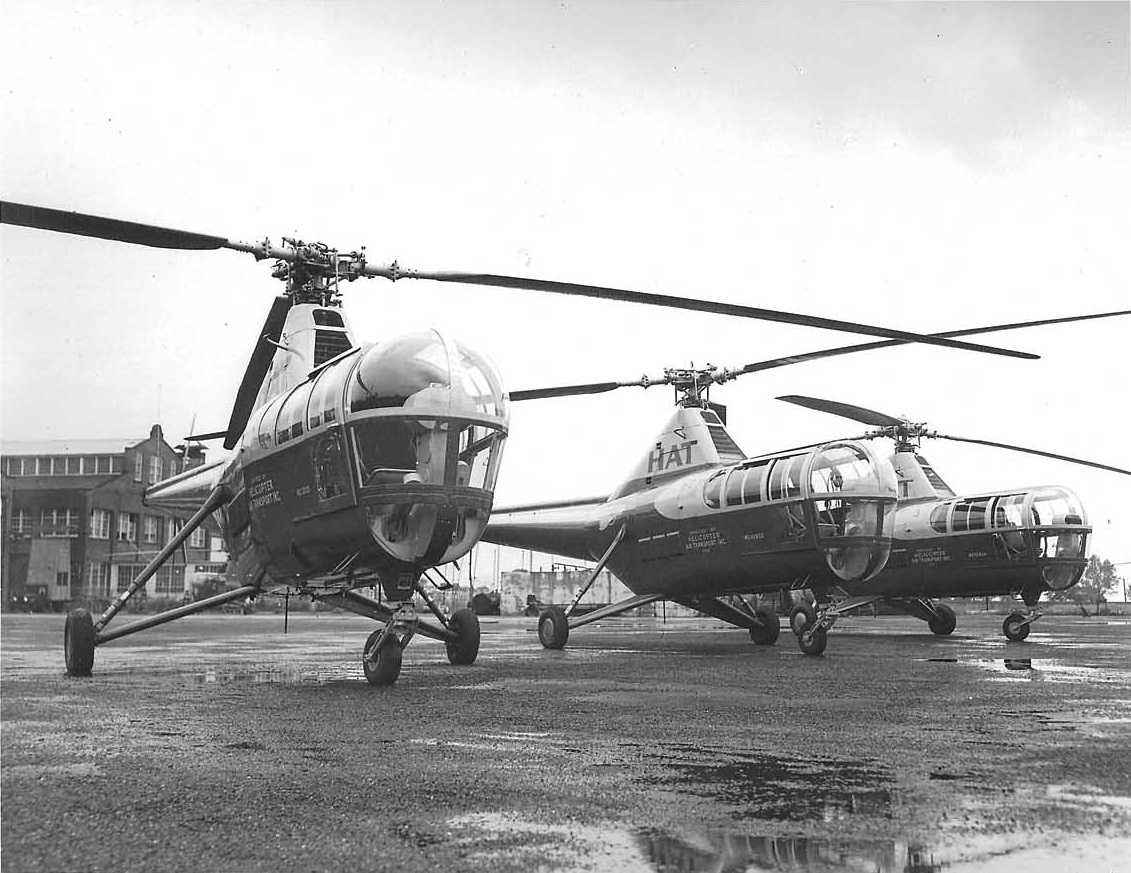
The original order with Platt-LePage Aircraft was to build PL-12 civil five place helicopters for HAT. (The XR-1A would have been converted to a JPL-12) Unfortunately HAT ran out of cash, and defaulted on the order, and Platt-LePage Aircraft was closed within a very short time.